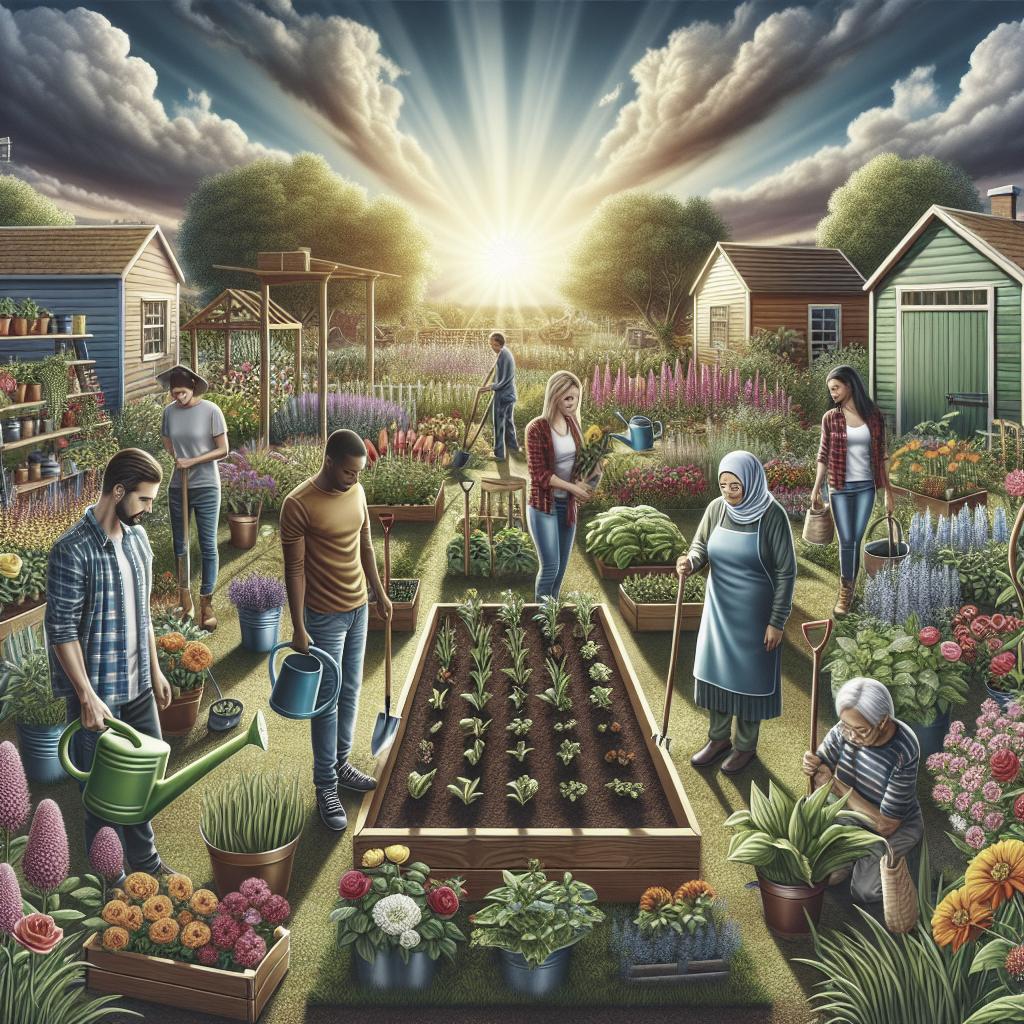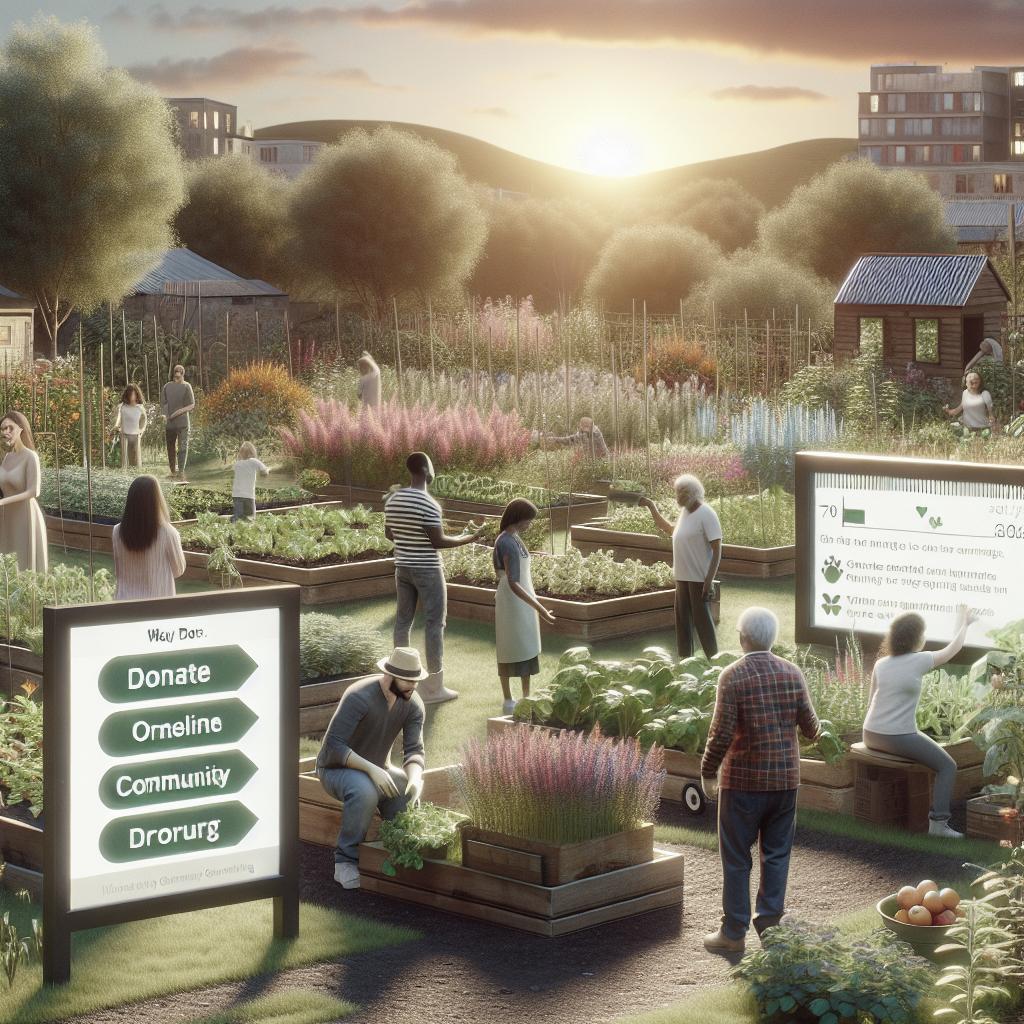How to Involve Diverse Communities in Gardening Projects Gardening has always been more than mere horticulture; it’s about fostering connections, promoting sustainability, and creating a shared sense of accomplishment. Involving diverse communities in gardening projects can enhance these aspects while also bridging gaps between different cultural, social, and economic backgrounds. This blog post aims to provide actionable insights into making gardening initiatives more inclusive, engaging, and impactful for a wide range of participants. By focusing on community needs, cultural expressions, and educational aspects, we can nurture a cooperative environment where everyone reaps the benefits of communal gardening. ###
Rate this article
Engagement metrics are crucial for understanding how well your content resonates with its audience. By incorporating interactive elements such as article ratings, you can gather immediate feedback. This helps in identifying areas where you need improvement for meeting the community’s needs better. Encourage readers to rate your content, and make it a habit to regularly review and act upon this feedback. The rating system should be simple yet effective. Consider using a five-star system, along with a prompt for additional comments. This not only makes your article more engaging but also gives you a more nuanced understanding of how well the content is received. ###
Thanks for your feedback
Gratitude fosters a sense of community and appreciation between the content creator and the readers. When you say “Thanks for your feedback,” it humanizes the interaction and acknowledges the readers’ effort in contributing to the improvement of your content. It’s a simple yet powerful way to engage your audience. Moreover, thanking your readers can serve as an invitation for further interaction. Encourage them to share their thoughts and perhaps their own experiences with gardening projects, thus creating a continuous loop of engagement and feedback. ###
Tell us more
Opening a dialogue with your audience is crucial for a content-rich experience. Under the heading “Tell us more,” encourage readers to share their own experiences, questions, or suggestions regarding community gardening projects. Their input can be invaluable and might offer fresh perspectives that you hadn’t considered before. This could also include running surveys or quick polls to gather targeted insights. By understanding what interests your audience the most, you can tailor future content more effectively to meet their needs and preferences. ###
More articles on Community Outreach
Creating a section dedicated to “More articles on Community Outreach” can enhance the user’s experience by offering additional resources. This encourages your readers to explore related topics, thus increasing their engagement time on your platform. For instance, include links to articles like “How to Organize a Community Clean-Up Event” or “Effective Ways to Promote Sustainability in Urban Areas.” This not only provides more value to your audience but also establishes your platform as a go-to resource for community-related content. ###
Are you sure you want to delete your contribution?
The heading “Are you sure you want to delete your contribution?” can be interpreted in a broader sense. For a gardening project, this could involve discussions about preserving individual and community efforts, emphasizing the value every participant adds to the project. Encourage community members to see their contributions as invaluable. Highlight success stories and testimonials that demonstrate the long-term benefits of participation, ensuring that everyone recognizes the significance of their involvement. ###
Are you sure you want to delete your reply?
Just as with contributions, replies and comments from the community can be a rich source of engagement and knowledge sharing. If someone decides to delete their reply, it’s essential to remind them of the value their voice adds. Dialogue and interaction between participants foster a sense of community and can lead to innovative ideas and solutions. Moreover, emphasize the importance of constructive debate and encourage respectful discussions. A healthy discourse can often generate actionable insights that benefit the entire community gardening project. ###
Leave a Reply Cancel reply
Encouraging community members to leave replies fosters interaction and engagement. However, provide an easy way for users to cancel replies if they change their mind. This flexibility makes your platform more user-friendly and approachable. Ensure that your reply system is intuitive, allowing for easy participation even for those who may not be tech-savvy. Simplicity and ease of use can make community engagement more accessible for all members. ###
1
To involve diverse communities in gardening projects, begin by identifying and understanding the unique needs and preferences of each community. Conduct surveys, focus groups, and community meetings to get a clear picture of what different groups expect from such projects. Use this data to design activities and plans that cater to these needs. For instance, some communities might be more inclined towards growing vegetables, while others might prefer ornamental plants or herbs. By customizing your approach, you can ensure higher participation and satisfaction. ###
2
The next step is to highlight the benefits of community gardening. These can include physical health through moderate exercise, mental well-being from being in nature, and social connections made through working together. Sharing these benefits can be motivating for potential participants who may not initially see the value in joining. Use flyers, social media, and local events to spread the word. Personal testimonies and success stories can also be powerful motivators. Highlighting previous achievements can inspire new participants to get involved. ###
3
Education is a critical component of community gardening. Organize workshops and training sessions to teach essential skills such as plant care, composting, and sustainable gardening practices. This not only empowers participants but also makes the gardening process more engaging and fulfilling. Partner with local schools, non-profits, and gardening experts to offer educational programming. Kids’ activities, such as DIY planters or sunflower growing contests, can also engage younger community members, making the project a family affair. ###
4
Inclusivity is vital when involving diverse communities in gardening projects. Ensure that communication is accessible, perhaps offering materials in multiple languages or using interpreters during meetings. This effort demonstrates your commitment to inclusivity and can significantly increase participation. Consider the physical accessibility of your gardening sites. Raised beds or ergonomic tools can make gardening manageable for elderly participants or those with disabilities, thereby widening your project’s reach. ###
5
Foster a sense of ownership among participants. Allocate plots or sections of the garden to different community groups, schools, or families. This personal investment drives sustained engagement and a sense of pride in the communal project. Host regular check-ins and celebratory events, where each group can showcase their progress. Such activities not only boost morale but also create a vibrant community atmosphere, turning the garden into a social hub. ###
6
Sustainability must be at the core of your gardening projects. Educate participants on sustainable practices such as rainwater harvesting, composting, and organic pest control. Sustainable practices ensure the garden’s longevity and align well with global environmental objectives. Moreover, consider creating a seed bank or plant exchange program. This not only conserves biodiversity but also fosters a deeper connection to the natural world among community members. ###
7
Celebrate diversity through gardening by incorporating plants and gardening practices from various cultures represented in your community. For example, growing crops native to different regions can be both educational and enriching for all participants. Organize cultural exchange events in the garden, where community members can share traditional food recipes, music, and stories related to their gardening experiences. This fosters a deeper understanding and appreciation of the diverse cultural backgrounds within your community. ### Future Prospects Here’s a summary of the key points covered in this blog post: “`html
| Section | Key Points |
|---|---|
| Rate this article | Use engagement metrics to gather feedback and improve content. |
| Thanks for your feedback | Acknowledge readers’ contributions to foster a sense of community. |
| Tell us more | Encourage readers to share their experiences and suggestions. |
| More articles on Community Outreach | Provide additional resources for readers interested in related topics. |
| Are you sure you want to delete your contribution? | Emphasize the value of each participant’s effort in the gardening project. |
| Are you sure you want to delete your reply? | Highlight the importance of dialogue and constructive discussion. |
| Leave a Reply Cancel reply | Ensure an intuitive system for community engagement and interaction. |
| 1 | Identify community needs and preferences for customized planning. |
| 2 | Highlight the benefits of community gardening to motivate participation. |
| 3 | Organize educational workshops to teach essential gardening skills. |
| 4 | Ensure inclusivity and accessibility in communication and site design. |
| 5 | Foster a sense of ownership by allocating plots and hosting events. |
| 6 | Promote sustainable practices to ensure long-term project viability. |
| 7 | Celebrate cultural diversity through inclusive gardening activities. |
“` Incorporating diverse communities into gardening projects provides countless benefits – from fostering social connections to promoting sustainability and education. By taking a thoughtful and inclusive approach, we can turn gardening into a genuinely communal and enriching experience for everyone involved.


